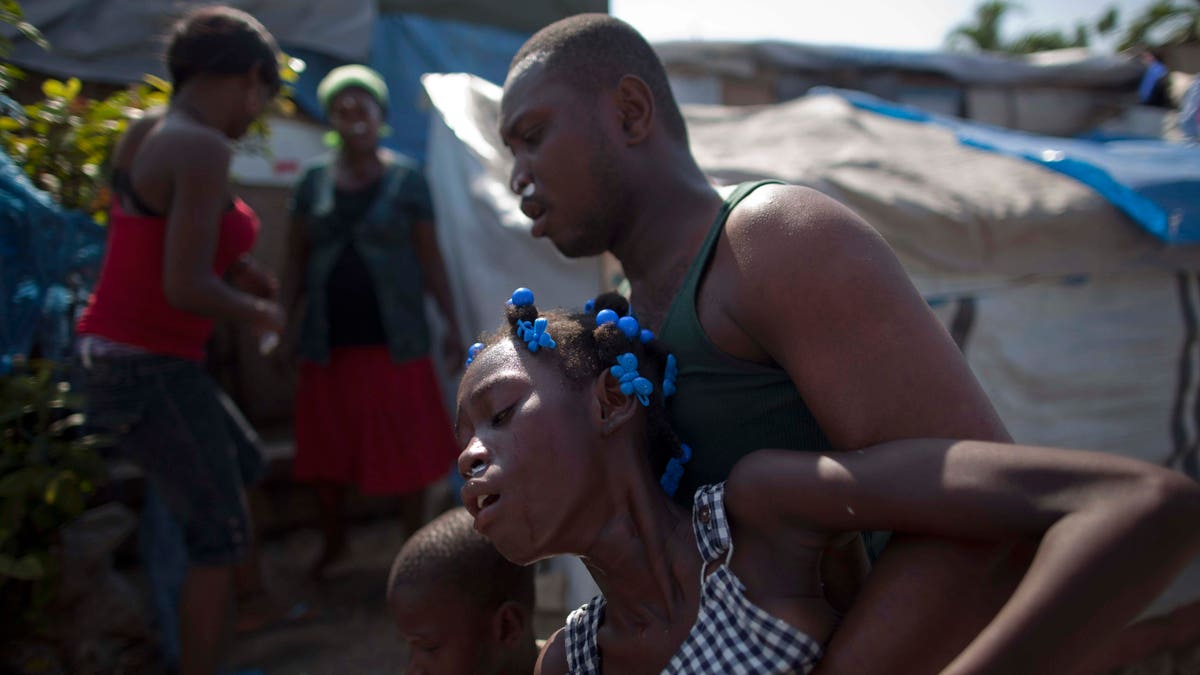
Refugees react to the effects of tear gas fired by police and UN soldiers during a protest in an area where displaced earthquake survivors live in Port-au-Prince, Haiti, Thursday, Nov. 18, 2010. Following days of rioting in northern Haiti over suspicions that U.N. soldiers introduced a cholera epidemic that has killed more than 1,000 people, protesters in Haiti's capital clashed with police Thursday lashing out at U.N. peacekeepers and the government, blocking roads and attacking foreigners' vehicles. (AP Photo/Emilio Morenatti) (AP Photo/Ramon Espinosa)
Cholera continues to expand its presence in the Dominican Republic.
Health officials there say that five new cases of the disease have emerged – three men between the ages of 40 and 59 were hospitalized in the town of Banica, near the border with Haiti.
The two other cases were reported near the northwest town of Santiago.
And that is causing fear that the disease – traced to Haiti, which shares the island of Hispaniola with the Dominican Republic -- is making its way inland.
Haiti, still reeling from a devastating earthquake earlier this year, has seen 90,000 of its residents infected with cholera. Another 2,000 have died.
The number of deaths in Haiti alone since October is dramatic, especially given that in 2007, cholera's presence in 53 countries was linked to 4,031 deaths, according to the Centers for Disease Control, or CDC.
The first case of cholera in the Dominican Republic was traced to a 32-year-old man who works in the construction industry in Punta Cana, a popular tourist spot.
The stream of reports recently about cholera cases in the Dominican Republic has come as authorities in this country are waiting for the results of tests conducted to see if the disease bacteria are present in the water near the Haitian border.
Health officials have been scrambling to contain the spread of cholera, going house to house to check on whether anyone has diarrhea, and distributing information about the symptoms so that families can act quickly.
Cholera returned to Latin America in the 1990s, after a century-long absence, according to the CDC website. It appeared in Peru, becoming a mass epidemic, and then spread to other countries in the Western Hemisphere.
Several governments, United Nations agencies and the private sector sprung into action, combating the crisis through more access to treatment, as well as addressing drinking water and sanitation. Those efforts helped keep the mortality rate below one percent and reduced the number of cases from more than 1 million to less than 5,000.
The CDC website says: "The risk of cholera for travelers to the Dominican Republic is likely very low if appropriate precautions are taken."
Nonetheless, people traveling there are advised to exercise caution by, among other things, preparing a travel kit to prevent and treat it. The kit, the CDC says, should include a prescription antibiotic to take in case of travelers’ diarrhea, water purification tablets, and oral rehydration salts.
Health experts say that the Latin American epidemic from the 1990s indicates that additional cases of cholera could continue to appear for months, at the very least, if not several years.
"The disease is most often spread through the ingestion of contaminated food or drinking water," the CDC says. "Water may be contaminated by the feces of an infected person or by untreated sewage. Food is often contaminated by water containing cholera bacteria or being handled by a person ill with cholera."
The Associated Press contributed to this report.
Follow us on twitter.com/foxnewslatino
Like us at facebook.com/foxnewslatino
